
Is Lack of Sunlight Killing My Succulent?

One of the most popular types of houseplants today are succulents. These plants have gained popularity due to their unique and vibrant appearance, as well as their reputation for being low-maintenance. However, despite their hardy nature, succulents still require certain conditions to thrive. One crucial factor for their survival is sunlight.
We will explore the importance of sunlight for succulents and how it affects their growth and overall health. We will discuss the ideal amount of sunlight that succulents need, the signs of sun damage, and the steps you can take to ensure that your succulents receive adequate sunlight. Whether you are a seasoned succulent enthusiast or a beginner looking to care for your first plant, this article will provide you with the necessary information to keep your succulents healthy and happy.
- Provide artificial sunlight for your succulent using a grow light
- Move your succulent to a location with more natural sunlight
- Trim any nearby plants or objects that may be blocking sunlight
- Consider using a reflective surface to redirect sunlight towards your succulent
- Ensure that your succulent is receiving the right amount of water and nutrients for optimal growth
- Rotate your succulent occasionally to ensure all sides receive equal sunlight
- Avoid placing your succulent in direct sunlight during the hottest parts of the day to prevent sunburn
- Monitor your succulent closely for signs of stress or damage due to lack of sunlight
- If all else fails, consider propagating your succulent to start new plants that can be placed in sunnier locations
- Frequently Asked Questions
Provide artificial sunlight for your succulent using a grow light
If you notice that your succulent is not receiving enough sunlight, don't fret! There is a solution to this problem. One way to provide the necessary light for your succulent is by using a grow light. A grow light is a type of artificial lighting specifically designed to mimic the sun's rays and provide the necessary spectrum of light for plants to thrive.
When choosing a grow light for your succulent, it is important to consider the intensity and spectrum of light it emits. Succulents generally require bright, indirect light, so look for a grow light that provides a full spectrum of light, including both red and blue wavelengths. This will ensure that your succulent receives the right amount and type of light it needs to grow and stay healthy.
There are various types of grow lights available in the market, including fluorescent, LED, and high-intensity discharge (HID) lights. Each type has its own advantages and disadvantages, so it's essential to do your research and choose the one that best suits your needs and budget.
Benefits of using a grow light for your succulent
Using a grow light can offer several benefits for your succulent:
- Consistent light source: With a grow light, you can provide your succulent with a consistent and reliable source of light, regardless of the weather or time of year. This is especially important if you live in an area with limited sunlight or experience long, dark winters.
- Controlled light exposure: Grow lights allow you to control the duration and intensity of light your succulent receives. This can be particularly useful if you notice signs of sunburn or light stress on your plant. You can easily adjust the distance between the grow light and your succulent to ensure it receives the optimal amount of light.
- Encourages growth and flowering: Adequate light is crucial for succulents to grow and bloom. By providing artificial sunlight with a grow light, you can stimulate healthy growth and encourage your succulent to produce vibrant flowers.
Remember to place your succulent within a reasonable distance from the grow light, usually around 6 to 12 inches depending on the light intensity. Avoid placing it too close, as this can cause heat stress or burn the leaves. Additionally, make sure to follow the recommended lighting schedule for your specific succulent species, as different succulents have varying light requirements.
 Optimal Outdoor Climate for Succulents: Temperature Range Tips
Optimal Outdoor Climate for Succulents: Temperature Range TipsBy providing your succulent with the artificial sunlight it needs, you can ensure its overall health and growth, even in environments with limited natural light. So, don't let lack of sunlight be the demise of your beloved succulent - invest in a quality grow light and watch it thrive!
Move your succulent to a location with more natural sunlight
One of the most common reasons why succulents fail to thrive is due to a lack of sunlight. These plants are native to arid regions and have adapted to survive in bright and sunny conditions. Without adequate sunlight, your succulent may become stretched, pale, and weak.
To address this issue, it is important to move your succulent to a location where it can receive more natural sunlight. Look for a spot near a sunny window or a balcony where the plant can soak up the sun's rays. Ideally, your succulent should receive at least six hours of direct sunlight each day.
If you're unable to provide enough natural sunlight, you can also consider using grow lights. These artificial lights are designed to mimic the spectrum of sunlight and can be a great alternative for indoor gardening. Place the grow lights at a suitable distance from your succulent to ensure it receives the right amount of light.
Remember, different succulent species have varying light requirements. Some may thrive in bright, direct sunlight, while others prefer indirect or filtered light. It's important to research the specific needs of your succulent to ensure it receives the appropriate amount of sunlight.
Lastly, keep in mind that succulents are known for their ability to tolerate drought conditions. While sunlight is crucial for their growth, be careful not to overwater your succulent as it can lead to root rot. Maintain a well-draining soil and water your plant only when the top inch of the soil feels dry.
By providing your succulent with the right amount of sunlight, you can help it thrive and maintain its vibrant colors and plump leaves.
 The Ideal Amount of Sunlight for Succulent Growth: A Guide
The Ideal Amount of Sunlight for Succulent Growth: A GuideTrim any nearby plants or objects that may be blocking sunlight
If you notice that your succulent is not receiving enough sunlight, one of the first steps to take is to trim any nearby plants or objects that may be blocking the sunlight. This is important because succulents thrive in bright light conditions and need several hours of direct sunlight each day to stay healthy.
Start by evaluating the area where your succulent is placed. Are there any tall plants or trees nearby that could be casting a shadow over it? If so, consider trimming them back or relocating your succulent to a spot where it can receive more unobstructed sunlight.
Similarly, take a look at any objects or structures that could be blocking the sunlight. This could include fences, buildings, or even decorative items like garden statues. While these objects may add visual interest to your garden, they can inadvertently prevent your succulent from getting the sunlight it needs.
Trimming nearby plants or objects that are blocking sunlight will help ensure that your succulent receives the optimal amount of light it requires to thrive. By making this simple adjustment, you can significantly improve your succulent's health and overall growth.
Consider using a reflective surface to redirect sunlight towards your succulent
It is a well-known fact that succulents thrive in bright sunlight. However, if you have noticed that your succulent is not growing as well as it should, lack of sunlight may be the culprit. The good news is that there are steps you can take to remedy this situation and give your succulent the light it needs to flourish.
One effective method to redirect sunlight towards your succulent is by using a reflective surface. This can be as simple as placing a mirror or a piece of shiny foil near your plant. The reflective surface will bounce the sunlight back onto the succulent, maximizing its exposure to light.
When using a reflective surface, it is important to position it in a way that it reflects light onto the succulent without causing excessive heat. Direct sunlight can be intense, and if the reflected light is too harsh, it may scorch the leaves of your succulent. Therefore, it is essential to monitor the amount of reflected light your succulent receives and adjust the position of the reflective surface accordingly.
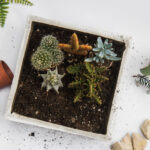 Sunlight Needs of Succulent Plants: Finding the Perfect Balance
Sunlight Needs of Succulent Plants: Finding the Perfect BalanceAnother option is to use a light-reflecting material specifically designed for plants. These materials, such as Mylar or reflective films, are designed to diffuse light evenly and prevent overheating. They can be easily installed around your succulent to redirect sunlight towards it. Just make sure to follow the manufacturer's instructions when applying these materials to ensure optimal results.
Remember that while sunlight is important for the growth of succulents, they also need some shade to prevent sunburn. If you notice signs of sunburn, such as brown or discolored patches on the leaves, it is crucial to provide your succulent with some shade during the hottest hours of the day. This can be achieved by using a sheer curtain or by moving the plant to a partially shaded area.
Lack of sunlight can indeed have a negative impact on the growth of your succulent. By using a reflective surface or light-reflecting materials, you can redirect sunlight towards your plant and ensure it receives the light it needs to thrive. Just remember to monitor the intensity of the reflected light and provide some shade if necessary. With the right balance of sunlight, your succulent will flourish and bring beauty to your space.
Ensure that your succulent is receiving the right amount of water and nutrients for optimal growth
One of the key factors that can affect the health and well-being of your succulent is the amount of sunlight it receives. Sunlight is crucial for photosynthesis, the process by which plants convert sunlight into energy. Without adequate sunlight, your succulent may struggle to grow and thrive.
So, is lack of sunlight killing your succulent? Let's delve deeper into this topic and explore the impact of sunlight on succulents.
The Significance of Sunlight for Succulents
Succulents are plants that have adapted to survive in arid and dry environments. They have thick, fleshy leaves and stems that store water, allowing them to withstand long periods without rainfall. Despite their ability to tolerate drought, succulents still require sunlight to carry out essential metabolic processes.
 Can Peat Moss Be Beneficial as a Soil Amendment for Succulents?
Can Peat Moss Be Beneficial as a Soil Amendment for Succulents?Sunlight is essential for succulents because it provides the energy needed for photosynthesis. During photosynthesis, succulents convert light energy into chemical energy, which is then used to fuel their growth and development. Without sunlight, this process cannot occur, and your succulent may become weak and susceptible to diseases.
How Much Sunlight Does Your Succulent Need?
While succulents are known for their ability to tolerate drought, they still require a certain amount of sunlight to thrive. The amount of sunlight your succulent needs depends on its species and the specific conditions in your environment.
Generally, most succulents require at least 6 hours of direct sunlight per day. However, some succulents, such as those with variegated leaves, may require less sunlight to prevent their leaves from getting sunburned. On the other hand, succulents with darker or thicker leaves may be able to tolerate more sunlight.
It is important to observe your succulent and monitor how it responds to sunlight. If you notice that the leaves are becoming pale or stretched, it may be a sign that your succulent is not receiving enough sunlight. On the other hand, if the leaves are turning brown or scorched, it may indicate that your succulent is getting too much direct sunlight.
Tips for Providing Adequate Sunlight
- Place your succulent in a location where it can receive bright, indirect sunlight for most of the day.
- If you are growing your succulent indoors, place it near a south-facing window where it can get the most sunlight.
- Rotate your succulent periodically to ensure even exposure to sunlight and prevent it from leaning towards the light source.
- Consider using a grow light if you are unable to provide sufficient natural sunlight, especially during winter months when daylight hours are shorter.
Remember: While sunlight is essential for your succulent's growth, it is important to avoid exposing it to intense, direct sunlight for extended periods, as this can lead to sunburn and damage the plant.
By ensuring that your succulent receives the right amount of sunlight, you can help promote its overall health and prevent issues caused by a lack of sunlight. Remember to monitor your succulent's response to sunlight and make adjustments accordingly to create the ideal growing conditions for your beloved plant.
Rotate your succulent occasionally to ensure all sides receive equal sunlight
 Can Succulents Thrive Outdoors in Any Climate and Season?
Can Succulents Thrive Outdoors in Any Climate and Season?One of the most common reasons why succulents may struggle or even die is due to a lack of sunlight. These plants are known for their ability to thrive in bright, direct sunlight, so when they don't receive enough, it can have detrimental effects on their growth and overall health.
One simple solution to ensure your succulent gets adequate sunlight is to rotate it occasionally. By doing so, you can make sure that all sides of the plant receive equal amounts of sunlight, preventing any areas from becoming weak or stretched out.
When rotating your succulent, keep in mind that they prefer bright, indirect light rather than intense, direct sunlight. Placing them near a window with sheer curtains or in a well-lit room can provide the ideal lighting conditions.
Here are a few tips to help you properly rotate your succulent:
- Observe the growth pattern: Before rotating your succulent, take note of which direction it leans or where it naturally receives more light. This will help you determine the best angle to position it.
- Rotate 180 degrees: Carefully turn your succulent around by 180 degrees, ensuring that all sides of the plant get an equal amount of sunlight exposure.
- Keep track of time: To maintain a balanced growth, aim to rotate your succulent every two to three weeks. This frequency allows each side to receive an adequate amount of sunlight without causing stress to the plant.
By regularly rotating your succulent and providing it with the proper amount of sunlight, you can help ensure its longevity and vibrant appearance. Remember, each plant is unique, so it's essential to observe how your succulent responds to sunlight and make adjustments accordingly.
Avoid placing your succulent in direct sunlight during the hottest parts of the day to prevent sunburn
When it comes to taking care of your succulent, finding the right balance of sunlight is essential. While succulents thrive in bright light, exposing them to direct sunlight during the hottest parts of the day can lead to sunburn. This can cause irreversible damage to your beloved plant.
 Unraveling the Secrets of Succulents: Thriving in Diverse Environments
Unraveling the Secrets of Succulents: Thriving in Diverse EnvironmentsStrong sunlight can scorch the leaves of your succulent, resulting in unsightly brown spots or patches. If you notice any discoloration on your plant, it is a clear sign that it is receiving too much direct sunlight. In extreme cases, the leaves may even become bleached or turn white.
To prevent sunburn and maintain the health of your succulent, it is crucial to find the right balance of sunlight exposure. While succulents need plenty of light to thrive, they also need protection from the intense rays of the midday sun.
How to protect your succulent from excessive sunlight:
- Provide partial shade: Place your succulent in an area where it receives bright, indirect light for most of the day. This can be achieved by positioning it near a window with sheer curtains or placing it under a shade cloth.
- Rotate your plant: If your succulent is placed near a window, be sure to rotate it regularly to ensure even exposure to sunlight. This will prevent one side of the plant from receiving more light than the other, reducing the risk of sunburn.
- Use a sheer curtain: If your succulent is positioned near a window that receives direct sunlight, you can hang a sheer curtain to filter the intense rays. This will help protect your plant from sunburn while still allowing it to receive the necessary light.
- Consider artificial light: If you are unable to provide adequate natural light, you can supplement with artificial light sources such as grow lights. These lights mimic the spectrum of sunlight and can be adjusted to provide the optimal amount of light for your succulent.
By following these tips, you can ensure that your succulent receives the right amount of light without risking sunburn. Remember, each succulent variety may have slightly different light requirements, so it is important to research the specific needs of your plant to provide the best care.
So, next time you're caring for your succulent, remember to strike the perfect balance between sunlight and shade to keep your plant healthy and thriving.
Monitor your succulent closely for signs of stress or damage due to lack of sunlight
One of the most common problems that succulent owners face is a lack of sunlight. Succulents are plants that thrive in bright, indirect sunlight, and they need this light to photosynthesize and grow properly. If your succulent is not getting enough sunlight, it can lead to a variety of issues, including stunted growth, pale or yellowing leaves, and even the death of the plant.
Signs of stress or damage
When your succulent is not receiving adequate sunlight, it will show signs of stress or damage. Here are some common indicators to watch out for:
 The Ultimate Guide: Maximum Size of Indoor and Outdoor Succulents
The Ultimate Guide: Maximum Size of Indoor and Outdoor Succulents- Etiolation: This is a term used to describe succulents that have stretched out and become leggy. The stems grow taller and the leaves become spaced out as the plant tries to reach for more light. Etiolated succulents are weaker and more prone to bending or breaking.
- Pale or yellow leaves: If your succulent's leaves start to lose their vibrant green color and become pale or yellow, it is a sign that the plant is not getting enough sunlight. Without sufficient light, the chlorophyll in the leaves cannot function properly, leading to discoloration.
- Slow or stunted growth: Succulents rely on photosynthesis to fuel their growth. If they are not receiving enough sunlight, their growth will be slowed or stunted. You may notice that new leaves are not forming or that the plant is not getting larger as quickly as it should.
If you notice any of these signs in your succulent, it is crucial to take action to remedy the situation and provide it with more sunlight.
Tip: While succulents need sunlight to thrive, it is important to strike a balance. Too much direct sunlight can also be harmful, causing sunburn or scorching of the leaves. Find a spot for your succulent where it can receive bright, indirect light for a few hours a day.
By closely monitoring your succulent and addressing any lack of sunlight issues promptly, you can ensure that your plant stays healthy and vibrant for years to come.
If all else fails, consider propagating your succulent to start new plants that can be placed in sunnier locations
Propagation: A Solution to Lack of Sunlight
If you've tried all the possible remedies to provide enough sunlight for your succulent but it still doesn't seem to thrive, it might be time to consider propagation. Propagation is the process of creating new plants from the parent plant, and it can be a great solution for succulents that are not getting enough sunlight.
To propagate your succulent, follow these simple steps:
- Choose a healthy parent plant: Look for a succulent that is thriving and has no signs of disease or damage. This will ensure that the new plants have the best chance of survival.
- Prepare a suitable container: Select a small pot or container with good drainage. Fill it with a well-draining soil mix, such as a combination of potting soil and perlite.
- Take a cutting: Gently remove a healthy leaf or stem from the parent plant by cutting it close to the base. Make sure to use a clean, sharp knife or scissors to avoid damaging the plant.
- Allow the cutting to dry: Place the cutting in a shaded area and let it dry for a few days. This will allow the cut end to callus over, which helps prevent rotting when it is planted.
- Plant the cutting: Once the cutting has dried, plant it in the prepared container. Insert the cut end into the soil, making sure it is firmly planted but not buried too deep.
- Provide proper care: Place the newly planted cutting in a bright, indirect sunlight location. Water it sparingly, allowing the soil to dry out between waterings. Over time, the cutting will develop roots and begin to grow into a new succulent plant.
Propagation can be a rewarding experience as you watch your succulent grow and thrive in a sunnier location. Remember to be patient and provide the necessary care for the new plants to establish themselves.
 Are my succulents stretching under my grow light? How to prevent it
Are my succulents stretching under my grow light? How to prevent itBy propagating your succulent, you not only solve the issue of lack of sunlight, but you also get the opportunity to expand your succulent collection and create a beautiful display of plants in your home or garden. So don't hesitate to give propagation a try if your succulent is struggling in low-light conditions!
Frequently Asked Questions
1. Is lack of sunlight killing my succulent?
Possibly. Succulents need at least 6 hours of direct sunlight each day to thrive. Lack of sunlight can cause them to become leggy, pale, and weak.
2. How can I tell if my succulent is not getting enough sunlight?
If your succulent starts stretching or leaning towards the light source, develops pale or yellow leaves, or becomes floppy and weak, it may be a sign that it is not getting enough sunlight.
3. Can I save my succulent if it's not getting enough sunlight?
Yes, you can try to save your succulent by providing it with more sunlight. Place it in a location that receives direct sunlight for at least 6 hours a day or consider using artificial grow lights.
 How Resilient Are Succulents to Temperature Fluctuations?
How Resilient Are Succulents to Temperature Fluctuations?4. Can too much sunlight harm my succulent?
Yes, excessive sunlight can harm your succulent. It can cause sunburn, scorching, or heat stress. If you notice your succulent's leaves turning brown or crispy, it may be a sign of too much sunlight.
If you want to read more articles similar to Is Lack of Sunlight Killing My Succulent?, you can visit the Growing Conditions category.

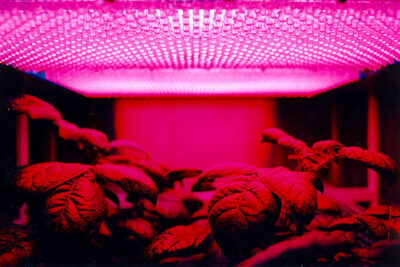
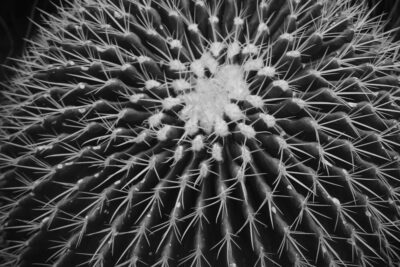
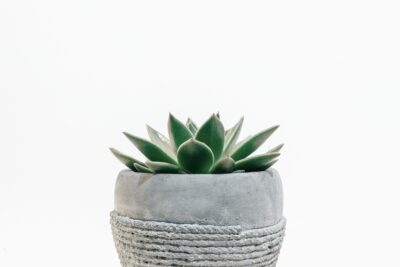
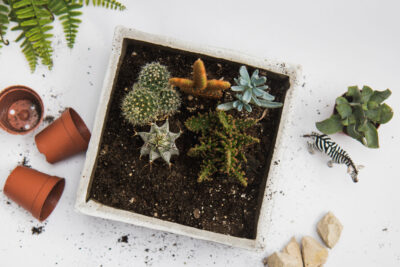

You Must Read